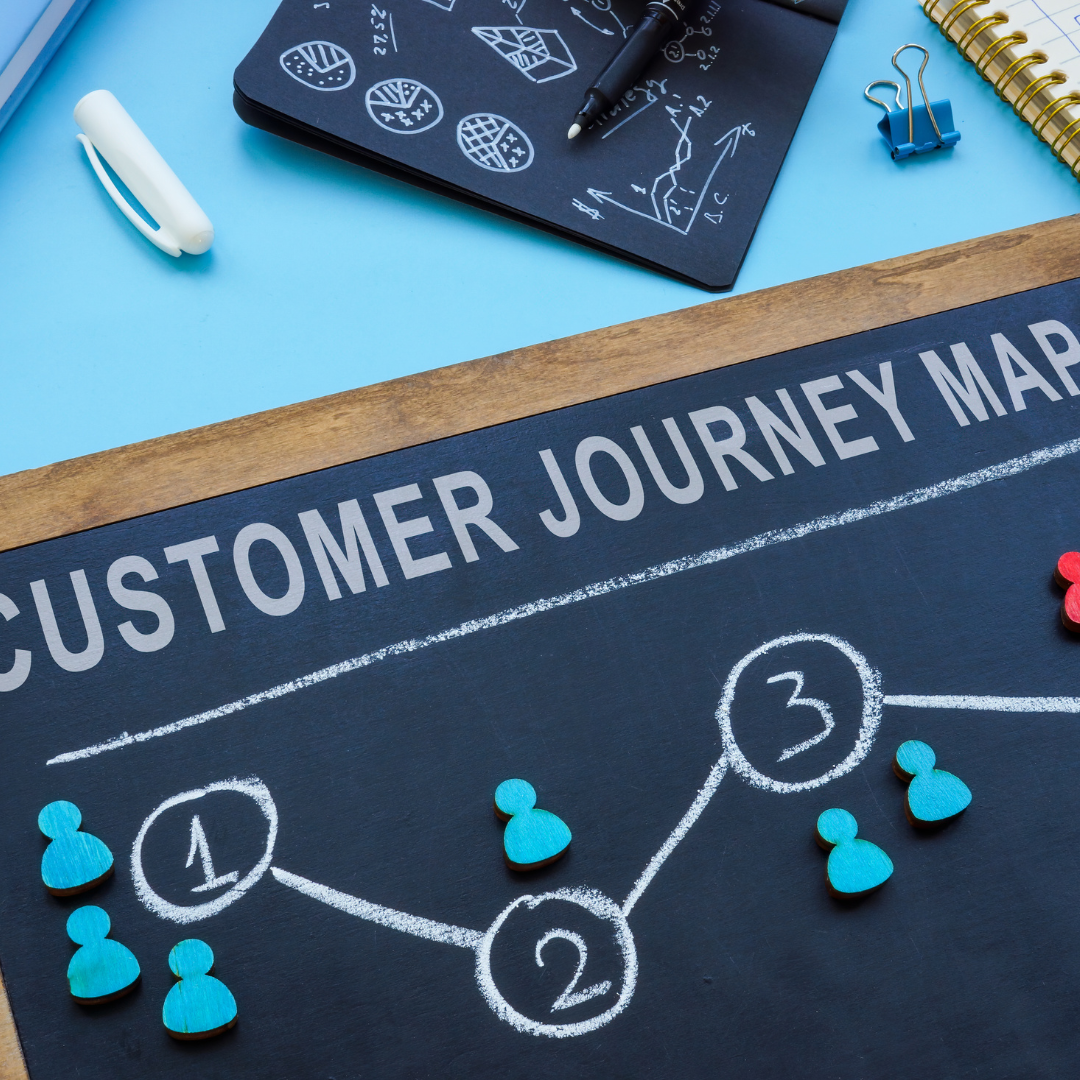Every interaction a customer has with your brand shapes their decision to stay or leave. If you don’t fully understand their experience, you could be losing sales and loyalty without even realizing it.
A Customer Journey Map helps you visualize each step your customers take—from discovering your brand to making a purchase and beyond—so you can eliminate friction and create a seamless, engaging experience. Here’s how to build one that keeps customers coming back.
1. Define Your Customer Persona (Know Who You’re Mapping For)
Before mapping out the journey, you need to understand who your customers are. Different buyers have different needs, challenges, and behaviors.
Demographics: Age, location, profession, income level.
Pain points: What problem are they trying to solve?
Goals & motivations: Why are they considering your product/service?
Buying behavior: Are they impulse buyers or do they research extensively?
💡 Example: A small business owner looking for marketing help has a very different journey than a corporate executive choosing an enterprise solution.
2. Identify the Key Customer Touchpoints
Every moment a customer interacts with your brand matters. Map out each step they take so you can optimize their experience.
- Awareness Stage: How do customers find you? (Social media, ads, referrals, SEO)
- Consideration Stage: How do they evaluate your brand? (Website, case studies, reviews, free trials)
- Purchase Stage: How easy is it to buy? (Checkout process, customer service, payment options)
- Post-Purchase Stage: How do you keep them engaged? (Follow-ups, loyalty programs, onboarding)
💡 Pro Tip: If customers drop off at a certain stage, there’s a problem that needs fixing.
3. Understand Emotions & Pain Points at Each Stage
A customer journey isn’t just about what people do—it’s about how they feel at each step.
- Frustrations: Long wait times, unclear pricing, slow website.
- Excitements: Personalized offers, easy onboarding, fast support.
- Hesitations: Security concerns, high prices, lack of reviews.
💡 Example: If customers keep abandoning their cart, your checkout might be too complicated, or you might need to offer more payment options.
4. Optimize Every Stage for a Seamless Experience
Once you’ve identified pain points, focus on turning weak spots into strengths.
- Make discovery easy – Are you visible where your audience is searching?
- Enhance user experience – Is your website fast and easy to navigate?
- Simplify the buying process – Are checkout and payment options hassle-free?
- Strengthen post-purchase engagement – Are you following up and offering value after the sale?
💡 Pro Tip: The easier and more enjoyable the experience, the more likely customers will return.
5. Continuously Improve the Journey
Customer needs evolve, and your journey map should too.
- Use analytics & feedback – Monitor data and gather customer insights regularly.
- Test new strategies – Try new engagement methods and track the results.
- Stay customer-focused – Adapt to changes in customer behavior and expectations.
Final Thoughts: Better Customer Journey = Stronger Loyalty & Sales
A well-optimized customer journey leads to more conversions, better customer retention, and long-term loyalty. When you eliminate roadblocks and enhance the experience, customers will choose your brand over the competition.
Want to create a seamless, engaging customer journey? LGCY Marketing can help you optimize every stage for better retention and higher conversions. Let’s build something great! 🚀





